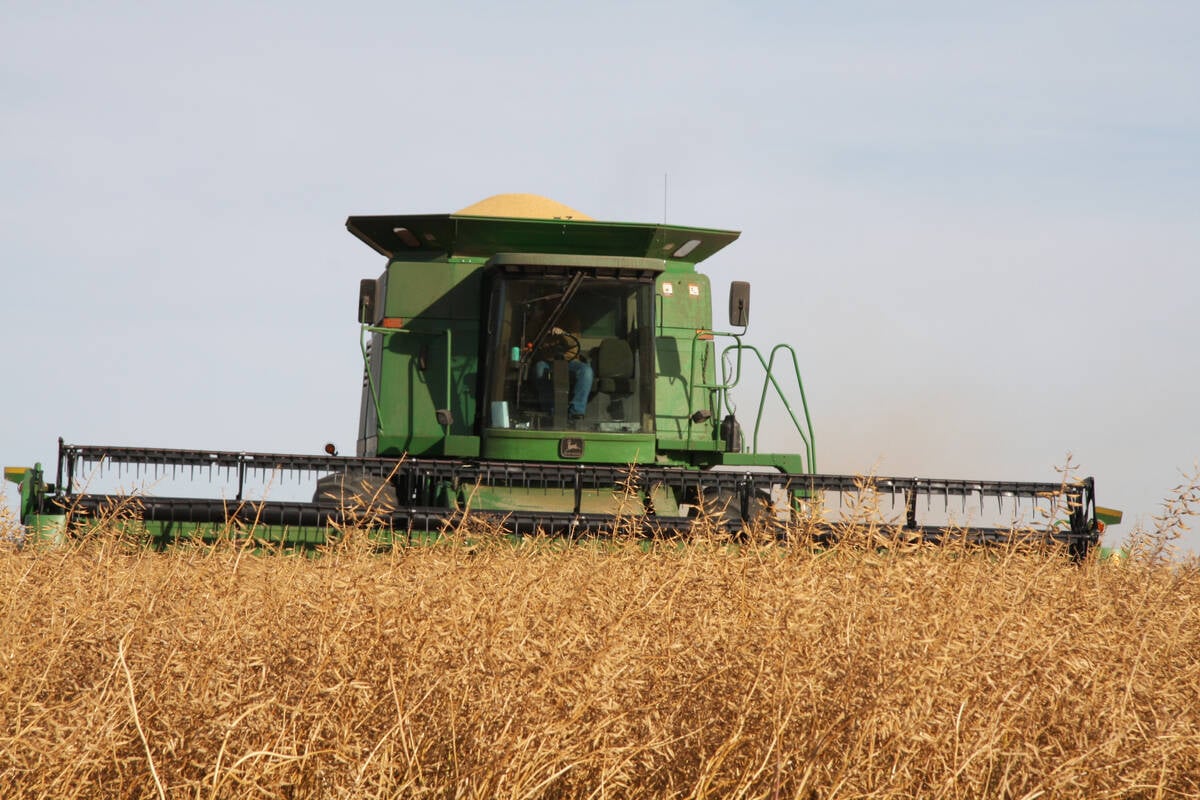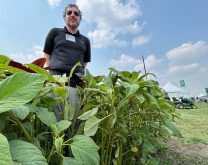Intercropping, predictive weed control could redraw the battle lines in the fight against herbicide resistant weeds
Herbicide resistance in weeds is rising and there are no new chemistries on the horizon, so farmers will need fresh approaches to integrated weed management strategies.
“I think the best management practice that someone could do for weed resistance is the one you’re not currently doing on your farm,” said Rory Cranston, technical strategy lead with Bayer. “Weeds figure out habits. They don’t figure out different system approaches.”
Cranston spoke on a panel about herbicide-resistant weed management at the Bayer Crop Science booth during July’s Ag in Motion show in Langham, Sask.
Read Also

Mustard processor expands in southern Alberta
$30 million expansion for southern Alberta mustard facility adds milling capacity to largest supplier in the world of value-added milled mustard products
Shaun Sharpe, a weed ecology research scientist with Agriculture Canada who was also on the panel, said afterward that using novel approaches to weed management doesn’t mean throwing the baby out with the bath water.

He says chemical control is the backbone of weed management strategies but the backbone is breaking. Farmers will have to adapt.
In conventional terms, spraying is timed to optimize yield, which seems like sound logic. The problem is that weeds that emerge later are often ignored because they don’t affect yield.
“Conventionally, we’ve just been leaving those alone. But, of course, those weeds produce seeds that go back into the seed bank,” said Sharpe. “Something like wild oat that emerges later has more potential to grow and produce seeds later in the season.”
The pillars of any weed management strategy are chemical control (herbicides), cultural control (crop rotation, cover crops), mechanical control (mowing, hand weeding) and, to a lesser extent, biological control.
Sharpe said farmers should focus on cultural strategies to reduce weed populations.
“We want to get canopy closure quickly, and we want to have a very competitive crop. So we want to pick crops that are going to be competitive against weeds, and we want to plant them in a way that we’re going to get good canopy coverage quickly.”
Those strategies could include higher seeding rates, using cover crops or introducing intercropping.
While none of these techniques are new, Sharpe said there is more interest in intercropping as a weed control method.
“When I was at AIM, I spent a lot of time at the intercropping plots for AAFC. I found that there is a lot of good feedback from the growers. They’re interested in how you seed it, how you harvest it, whether you can spray anything in it, and how it does against disease and weeds.”
Agriculture Canada is focusing on intercropping as a management strategy to combat herbicide resistance.
“I think that that system is going to grow. It’s just going to take some time, because it’s a new way to farm for a lot of folks who are doing monocultures,” Sharpe said.
“There’s still a lot of agronomic questions to answer, but I think it does have a lot of potential, and there was definitely a lot of interest from farmers.”
He said one thing is certain. No one is under the illusion that herbicide chemistries will be the saviour of agriculture as they once were.
“With herbicide resistance, we’re not going to spray our way out of it. That’s been the message for a few years now.”
Emerging technologies are helping farmers be more efficient with spraying. Targeted use of chemicals can extend their effectiveness and prevent emergence of herbicide resistance.
Optical spot sprayers are one tool in the fight. Boom-mounted cameras can detect a weed and spray it. The sprayers have been around for a while and the technology has recently been adapted for spray drones.
One company is taking the precision spraying concept beyond the seek-and-destroy approach of optical spot sprayers. Geco Agriculture’s predictive weed control system promises to pinpoint the location of weeds before they emerge.
It will even predict patches of herbicide-resistant weeds and it’s relatively inexpensive.
“They don’t need any new equipment, and they don’t need to adopt any new practices on the farm,” said Geco Agriculture CEO and founder Greg Stewart. “Really, what they’re buying from us is the analysis.”

The company pulls farm data (crop rotations, spraying records, etc.) from the past five years and sources imagery data from satellite providers.
In recent years, LiDAR (light detection and radar) and NDVI (normalized difference vegetative index) technology have exploded in terms of accuracy and scope, and they’re having a massive impact on agriculture.
But despite the resolution these satellite images can provide, it’s the scope rather than individual images that interests Stewart.
“What we really do is take a step back and try to understand how the weed population is evolving dynamically over several months and then over several years,” he said.
“You can get somewhere between two and four satellite images per week, depending a bit on cloud cover. We’re actually trying to leverage all of that data.”
With crop and spraying data collected from the farm, combined with the satellite data, Geco runs an analysis that produces several tools to manage weed pressure.
The first one is a five-year history of weeds in the field. An analysis produced today would go back to 2019 and indicate what weed patches looked like in each of those years, whether they’re getting better or worse, and the crops in which they appeared.
The next tool is a map that shows areas of potential herbicide-resistant weed patches in the field.
Stewart said farmers can use this as a preliminary indicator of potential resistance areas before the patches reach the size at which humans typically detect them.
The third tool is a prediction model, which estimates where the weeds will be in the coming season. The predictions aren’t infallible, but Geco has been conducting tests at a research farm run by the Winnipeg-based agricultural tech accelerator EMILI (Enterprise Machine Intelligence and Learning Initiative), and their predictions are close to the mark.
“Last year, we made predictions for 2024. We were usually in around the 90 per cent hit rate using the prediction,” said Stewart.
The final tool is a prescription map.
“The prescription map is just a file that a farmer will typically upload into their sprayer or granular applicator,” said Stewart.
“They’ll use the map to direct these actions towards the weediest hotspots, which will allow them to beat down the weeds before the season comes on.”
Ability to spray more efficiently will lower input costs.
“All of a sudden, it makes that more economically digestible to a farm and they may be willing to incorporate that into the rest of their weed protection program. So, you get an affordable way of introducing this mode of action into your strategy, and you get to focus it on where the weeds are the worst.”
Over time, “mother patches” of weeds reveal themselves.
“These mother patches of weeds that are out there tend to be your worst actors, and they will tend to donate weed seeds to the rest of the field. So, if you are able to start suppressing them, you can suppress weed emergence more generally, throughout the field,” Stewart said.
That’s just the chemical side of things. Geco’s predictive weed control system can also contribute on the cultural side of weed management.
“We’re getting people who are inputting our prescriptions into a seed drill,” said Stewart. “So what they’ll do is up the rate of seeding into the areas that are predicted to be the weediest, and that gives you some crop competition to fight the weeds. It’s just another tool in the toolbox.”


















